第一章 翻译概述
- 格式:doc
- 大小:29.00 KB
- 文档页数:2

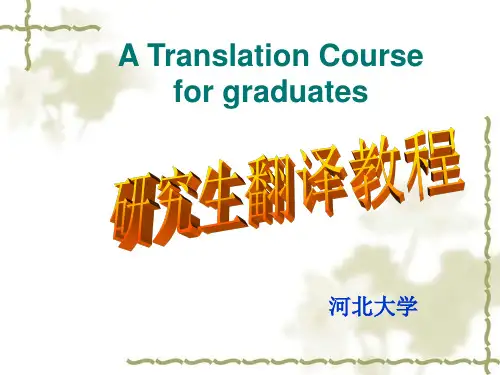
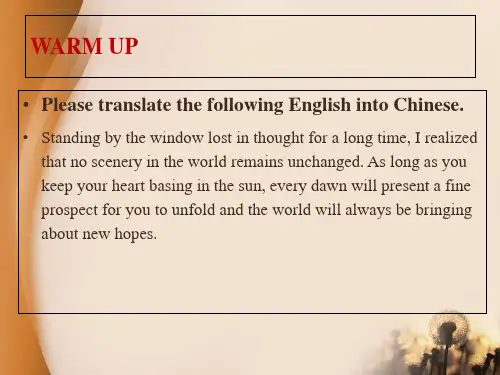
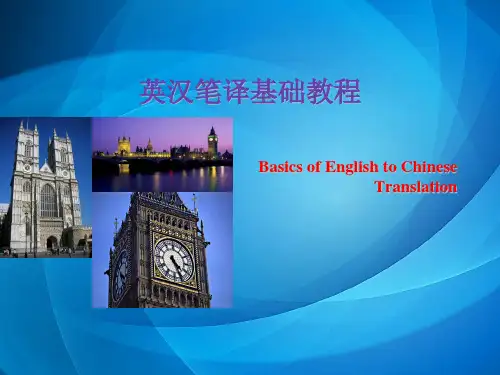
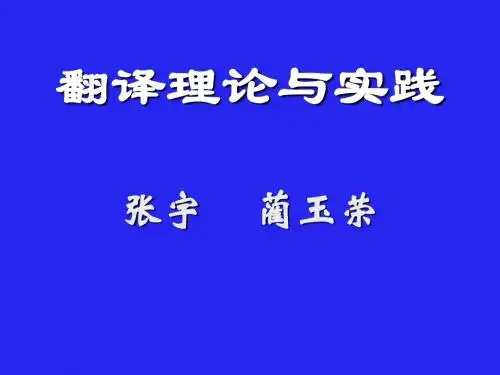
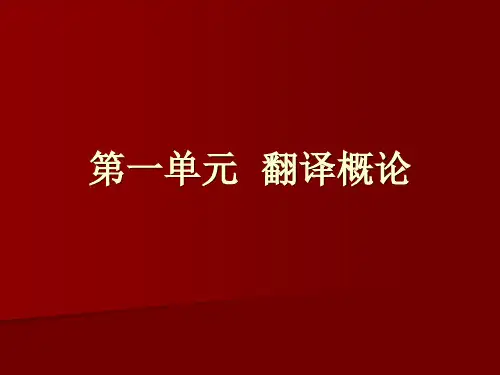
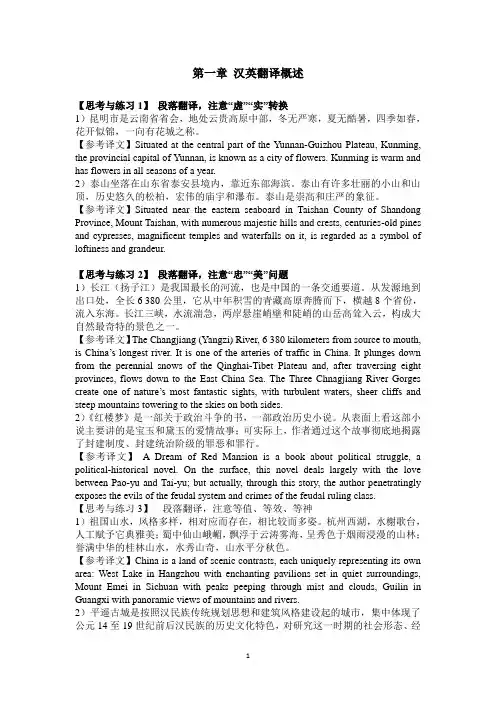
第一章汉英翻译概述【思考与练习1】段落翻译,注意“虚”“实”转换1)昆明市是云南省省会,地处云贵高原中部,冬无严寒,夏无酷暑,四季如春,花开似锦,一向有花城之称。
【参考译文】Situated at the central part of the Yunnan-Guizhou Plateau, Kunming, the provincial capital of Yunnan, is known as a city of flowers. Kunming is warm and has flowers in all seasons of a year.2)泰山坐落在山东省泰安县境内,靠近东部海滨。
泰山有许多壮丽的小山和山顶,历史悠久的松柏,宏伟的庙宇和瀑布。
泰山是崇高和庄严的象征。
【参考译文】Situated near the eastern seaboard in Taishan County of Shandong Province, Mount Taishan, with numerous majestic hills and crests, centuries-old pines and cypresses, magnificent temples and waterfalls on it, is regarded as a symbol of loftiness and grandeur.【思考与练习2】段落翻译,注意“忠”“美”问题1)长江(扬子江)是我国最长的河流,也是中国的一条交通要道。
从发源地到出口处,全长6 380公里,它从中年积雪的青藏高原奔腾而下,横越8个省份,流入东海。
长江三峡,水流湍急,两岸悬崖峭壁和陡峭的山岳高耸入云,构成大自然最奇特的景色之一。
【参考译文】The Changjiang (Yangzi) River, 6 380 kilometers from source to mouth, is China’s longest river. It is one of the arteries of traffic in China. It plunges down from the perennial snows of the Qinghai-Tibet Plateau and, after traversing eight provinces, flows down to the East China Sea. The Three Chnagjiang River Gorges create one of nature’s most fantastic sights, with turbulent waters, sheer cliffs and steep mountains towering to the skies on both sides.2)《红楼梦》是一部关于政治斗争的书,一部政治历史小说。
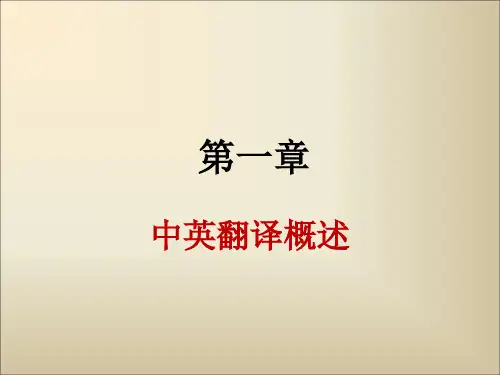

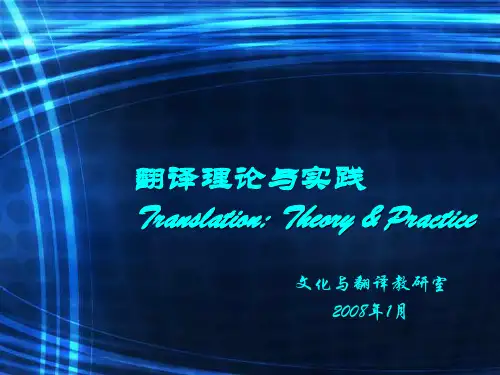
翻译理论与实践Translation: Theory & Practice文化与翻译教研室2008年1月•第一章翻译概述•第二章确定词义,表达得体•第三章翻译常用的八种技巧•第四章专有名词和其它一些名词的翻译•第五章英汉声色词互译•第六章书名和标题的翻译•第七章Idioms与熟语的翻译第一章翻译概述•什么是翻译?(Definition)•翻译的起源?(Origins)•翻译的标准?(Principles of Translation)•中西翻译史?(History)•翻译的一般性问题(Some Views on Translation)什么是翻译?(Definition)张培基Eugene A. Nida钟述孔Zhong ShukongCatford J. C.张培基翻译的定义:翻译是运用一种语言把另一种语言所表达的思维内容准确而完整地重新表达出来的语言活动。
Translation is a linguistic practice of employing one language to realize the thoughts expressed in another language exactly and completely.Eugene A. NidaTranslation consists in reproducing in the receptor language the closest natural equivalent of the source language, first in terms of meaning and secondly in terms of style. –By Eugene A. Nida(所谓翻译,是在译语中用切近而又最自然的对等语再现原语的信息,首先是意义,其次是文体。
)Zhong Shukong 钟述孔Translation, essentially, is the faithful representation, in one language, of what is written or said in another language.曾做过周恩来翻译J. C. Catford Translation is the “the replacement of textual material in one language (SL) by equivalent textual material in anotherlanguage (TL)” (J. C. Catford, 1965:20).(翻译是用一种语言(目的语)的文本材料对等地再现另一种语言(源出语)的文本材料。
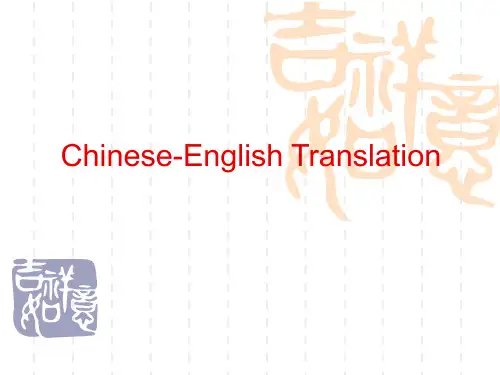
第一章汉英翻译概述【思考与练习1】段落翻译,注意“虚”“实”转换1)昆明市是云南省省会,地处云贵高原中部,冬无严寒,夏无酷暑,四季如春,花开似锦,一向有花城之称。
【参考译文】Situated at the central part of the Yunnan-Guizhou Plateau, Kunming, the provincial capital of Yunnan, is known as a city of flowers. Kunming is warm and has flowers in all seasons of a year.2)泰山坐落在山东省泰安县境内,靠近东部海滨。
泰山有许多壮丽的小山和山顶,历史悠久的松柏,宏伟的庙宇和瀑布。
泰山是崇高和庄严的象征。
【参考译文】Situated near the eastern seaboard in Taishan County of Shandong Province, Mount Taishan, with numerous majestic hills and crests, centuries-old pines and cypresses, magnificent temples and waterfalls on it, is regarded as a symbol of loftiness and grandeur.【思考与练习2】段落翻译,注意“忠”“美”问题1)长江(扬子江)是我国最长的河流,也是中国的一条交通要道。
从发源地到出口处,全长6 380公里,它从中年积雪的青藏高原奔腾而下,横越8个省份,流入东海。
长江三峡,水流湍急,两岸悬崖峭壁和陡峭的山岳高耸入云,构成大自然最奇特的景色之一。
【参考译文】The Changjiang (Yangzi) River, 6 380 kilometers from source to mouth, is China’s longest river. It is one of the arteries of traffic in China. It plunges down from the perennial snows of the Qinghai-Tibet Plateau and, after traversing eight provinces, flows down to the East China Sea. The Three Chnagjiang River Gorges create one of nature’s most fantastic sights, with turbulent waters, sheer cliffs and steep mountains towering to the skies on both sides.2)《红楼梦》是一部关于政治斗争的书,一部政治历史小说。
Chapter I Introduction to Translation Studies
Contents
1. Definitions of Translation
2. The Chinese Translation History
3. Western Translation History
1. Definitions of Translation
Q: What is Translate?
Its Etymology
The word translation derives from the Latin translatio (which itself comes from trans- and fero, the supine form of which is latum, together meaning "to carry across" or "to bring across").
The Ancient Greek term for translation, μετάυρασις(metaphrasis, "a speaking across"), has supplied English with metaphrase (a "literal," or "word-for-word," translation) —as contrasted with paraphrase ("a saying in other words", from παράυρασις, paraphrasis).[8]
Metaphrase corresponds, in one of the more recent terminologies, to "formal equivalence"; and paraphrase, to "dynamic equivalence."[9] Strictly speaking, the concept of metaphrase —of "word-for-word translation" —is an imperfect concept, because a given word in a given language often carries more than one meaning; and because a
similar given meaning may often be represented in a given language by more than one word. Nevertheless, "metaphrase" and "paraphrase" may be useful as ideal concepts that mark the extremes in the spectrum of possible approaches to translation. Definitions by some pre-eminent translators(请阅读教材P1-2)。
Q:What is the meaning of the language? Or can the translator render the meaning of a language into another.
In accordance with the functions and meanings of Language, we can form the idea that what aspect of language can be translated. Translatable element is denotative meaning or cognitive meaning while untranslatable elements are connotative meaning or affective meaning, voice and its related features. So some language theorists think literary works cannot be translated. At least, literary translation is the most difficult among all style of translation.
2. The Chinese Translation History
2.1. The earliest translation in China
The convincing historical record of the earliest translation activities in China can be found in the Zhou Dynasty(周代) about 3000 years ago.
In the books《周礼》and 《礼记》,the record of the title of the translator is kept. The title of the earliest translator is called 象胥。